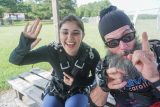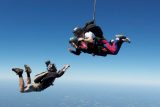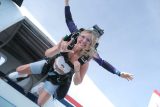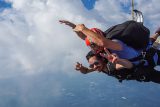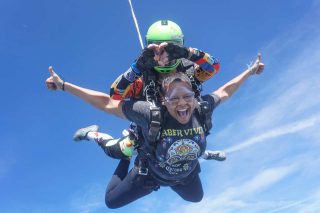How To Go Skydiving
Tandem Skydiving
5 years ago
Greetings fellow adventurer! If you’ve landed on this page it’s likely that you’re thinking about skydiving for the very first time and you’re wanting to know how to make it happen! You’ve come to the right place! In this article, we’re going to share everything you need to know about how to go skydiving for the very first time. Ready? Let’s go!!!!
How To Go Skydiving – Step 1 – Meeting the Prerequisites
First things first – do you qualify to make a tandem skydive? There are some basic prerequisites every person needs to meet before they make their first jump. These skydiving requirements are:
- All guests must be at least 18 years old (there are not exceptions to this rule)
- All guests must weigh less than 225lbs
- Guests must be able to verify their age with a government-issued, photo ID
- Guests must be in generally good health (if in doubt, please check with your physician)
That wasn’t so bad, was it? If you meet the criteria above, let’s move on to the next step. If you have more questions regarding the essentials you’ll need to know, visit our FAQs page!
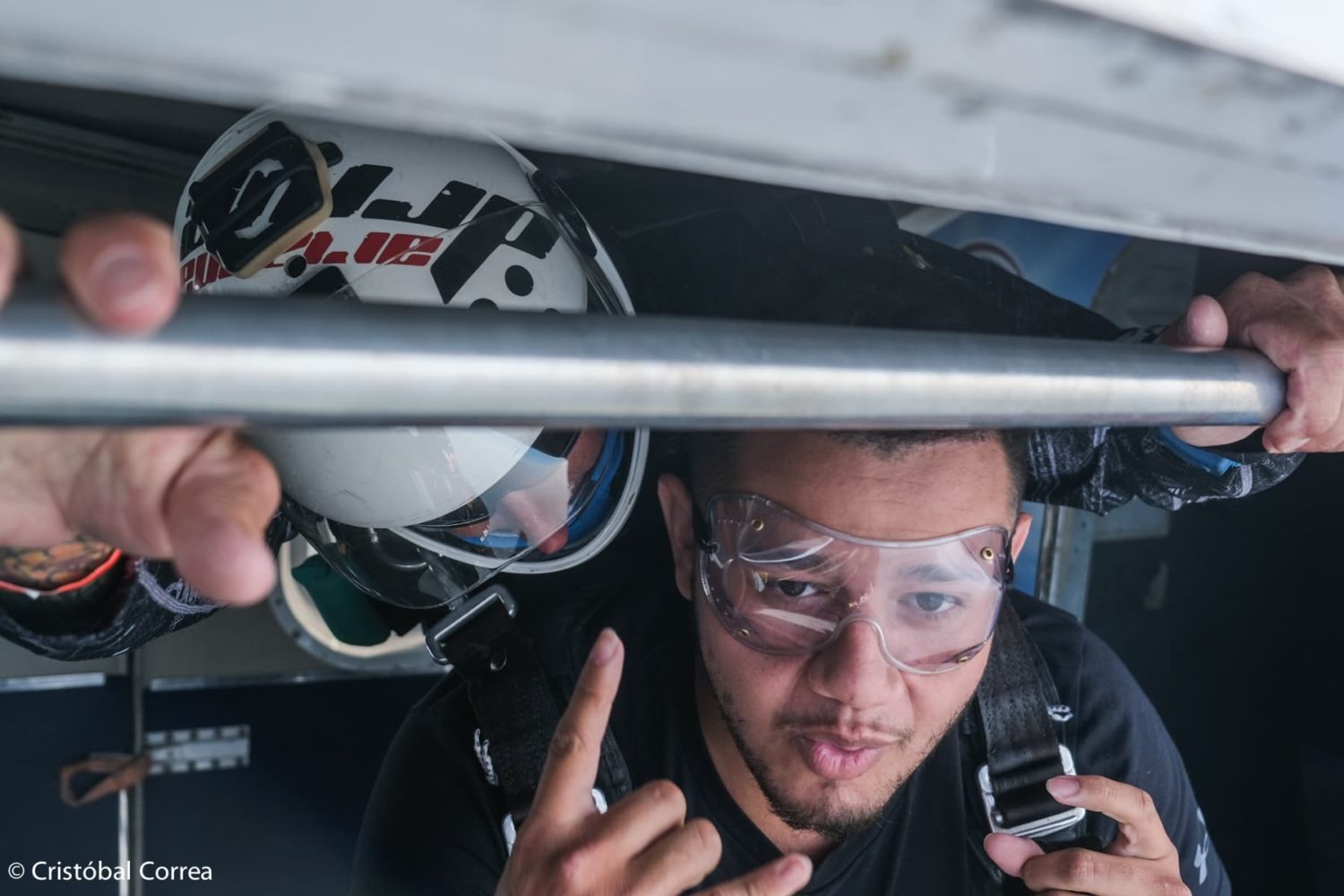
How To Go Skydiving – Step 2 – Understanding the Variables
With prerequisites squared away, it’s time to determine what kind of experience you’d like to have as a great skydive is more than exiting an airplane, freefalling and landing. For example, facilities, exit altitudes, aircraft type and video-type all play a significant role during the skydiving experience. Let’s break it down beginning with comfort.
Facilities
What do facilities have to do with a skydiving experience? Truthfully, a lot. Making a skydive does not involve rocking up to the dropzone, paying money, and boarding a plane (that seldom happens). There are paperwork and training to be done and usually some waiting involved, or if there’s a weather delay, a lot of waiting! Time spent on the ground should be comfortable and that’s not always the case at many dropzones.
At Skydive Carolina, we have an entire skydiving campus that includes air-conditioned registration, training rooms, and bathrooms along with an onsite snack bar, enormous hangar, shaded seating for participants and spectators, and lots of cornhole!
Exit Altitude
Once you decide that you wish to skydive, it’s a good idea to consider the exit altitude. Many dropzones around the US offer exit altitudes between 8,000’ and 14,000’. The difference between a 10,000’ and a 14,000’ skydive is about 30 seconds! A 10,000’ skydive lasts for about 30 seconds whereas a 14,000 foot jump allows for a full minute of freefall. That extra 4,000 feet makes a big difference!
At Skydive Carolina our standard exit altitude is 14,000 feet.
Types of Skydiving Aircraft
The type of aircraft you jump from plays a major role with the enjoyment of your first skydive. These considerations include space in the aircraft, capacity of jumpers and how easy it is to exit. Before we get into these details, below is a quick overview of the aircraft many skydiving centers use throughout the US. The most common is the Cessna 182, but it has its shortcomings. Allow us to elaborate on what you may see at various skydiving centers around the country:
Cessna 182
The backbone of the skydiving industry is the Cessna 182 due to its low cost to maintain and because it’s a workhorse! Our first ever aircraft in 1986 was a Cessna 182 (it’s still in our fleet, but seldom used). While the “182” is awesome, it can be a little cramped and requires guests to be able to feel comfortable crawling around. Guests who lack flexibility may wish to jump at a skydiving center with a bigger aircraft. It should also be noted that the Cessna 182 generally only flies to 10,000 feet.
If you were to poll the majority of skydivers they would usually prefer to jump from any one of the following:
de Havilland Twin Otter
In the skydiving world, the Twin Otter is considered to be the Rolls Royce of skydiving aircraft. Carrying 23 jumpers, this twin-engine beast comfortably gets jumpers to altitude in a short period of time and offers a very big door to allow for easy exits without much fuss. Skydive Carolina proudly flies this aircraft – it had been our dream for over 25 years to own one!
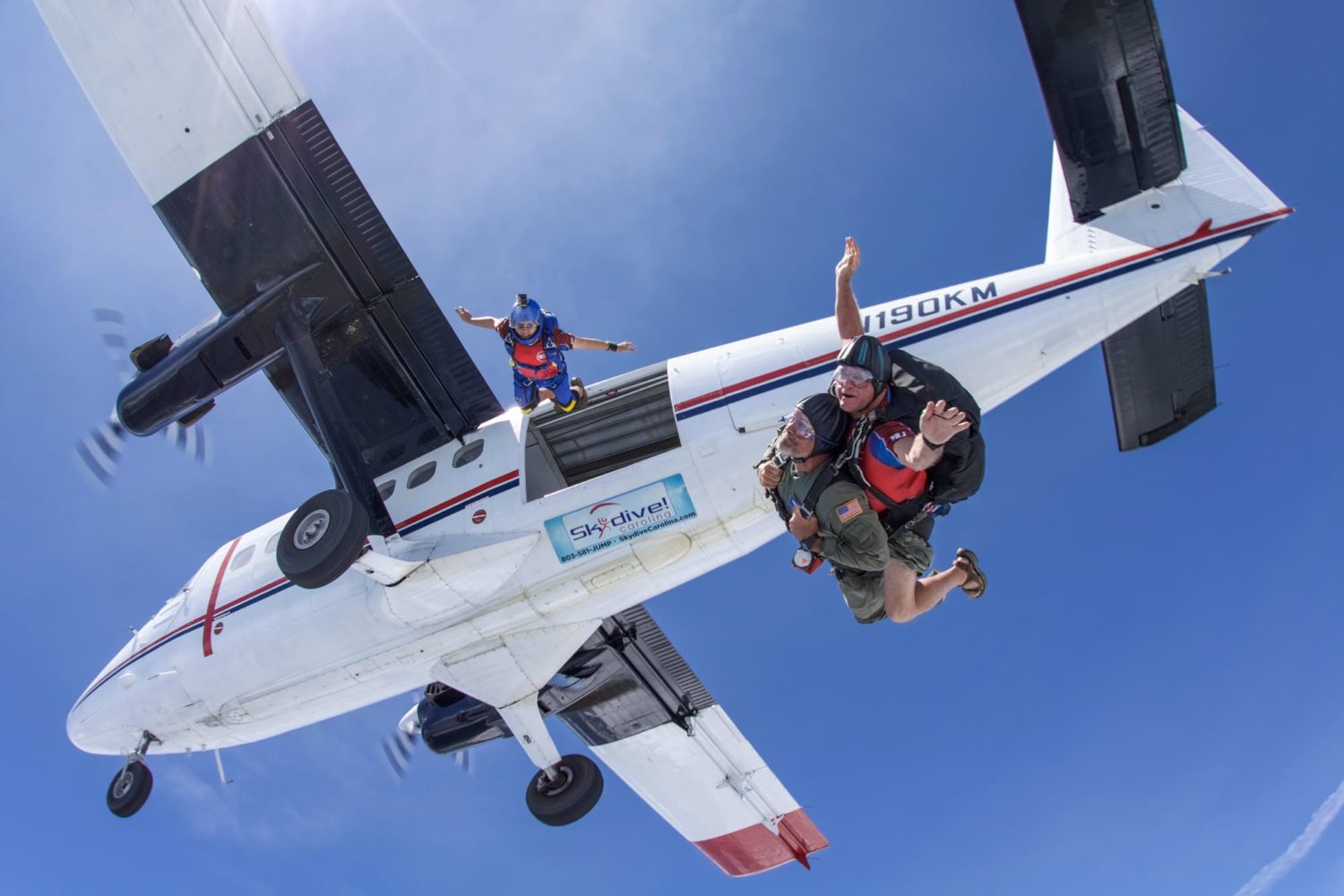
Cessna Grand Caravan
The Cessna Grand Caravan is probably a skydiver’s second favorite aircraft type behind the Twin Otter. It’s similar in many ways, but has a single engine instead of two and has a smaller capacity than the Twin Otter carrying 17 jumpers.
Casa 212
It’s a rarity to find, but if you can jump from a Casa you’re riding in style! This favorite with skydivers is a beast with a rear tailgate as opposed to a side door! It’s a thrill to run out the back of it and fling yourself into the atmosphere! The Casa holds 32 skydivers.
Shorts SkyVan
The Skyvan is similar to the Casa with that oh-so-sweet, rear tailgate. Known as the flying shoebox, this strange looking bird can comfortably haul 22 skydivers to altitude without any problem. Skydivers love it!
Beechcraft King Air
The King Air has a narrow door, but it’s the rocket ship of the skydiving industry hauling 12 jumpers to exit altitude in about 8 minutes! It’s not a fan favorite, but busy operations love using this aircraft because of the efficiency they bring due to their immense climb rate.
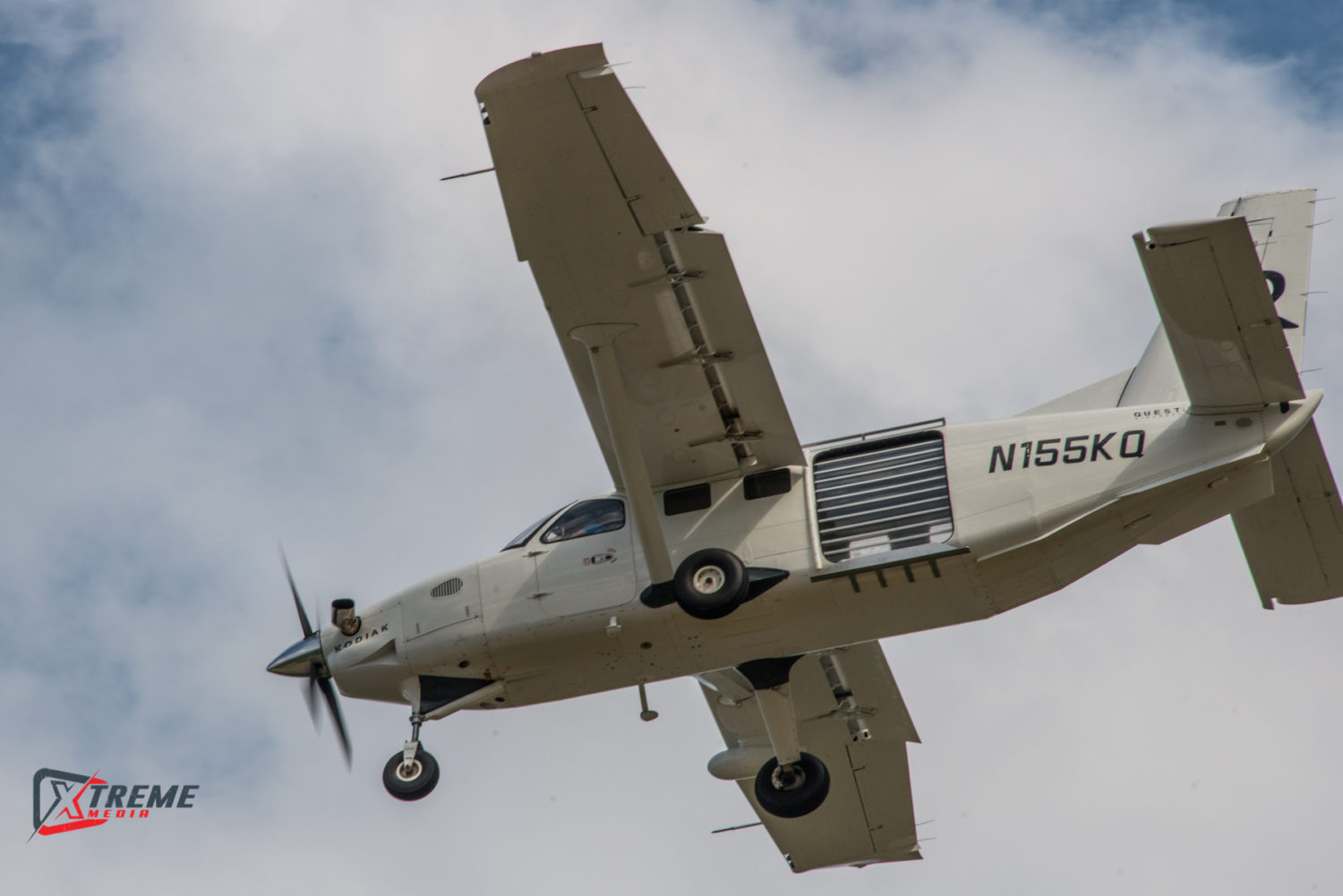
PAC 750XL
The PAC750XL is an unusual looking, single engine work horse that carries 17 skydivers to jump altitude economically. It’s not the fastest climber, but it’s hardly the slowest! The New Zealand built PAC continues to gain in popularity throughout the skydiving world.
Quest Kodiak
The Kodiak holds 11 skydivers and has a nice sizable door and is essentially a smaller version than the Cessna Grand Caravan. Skydive Carolina operates its Kodiak during weekday operations when things are a little less busy!
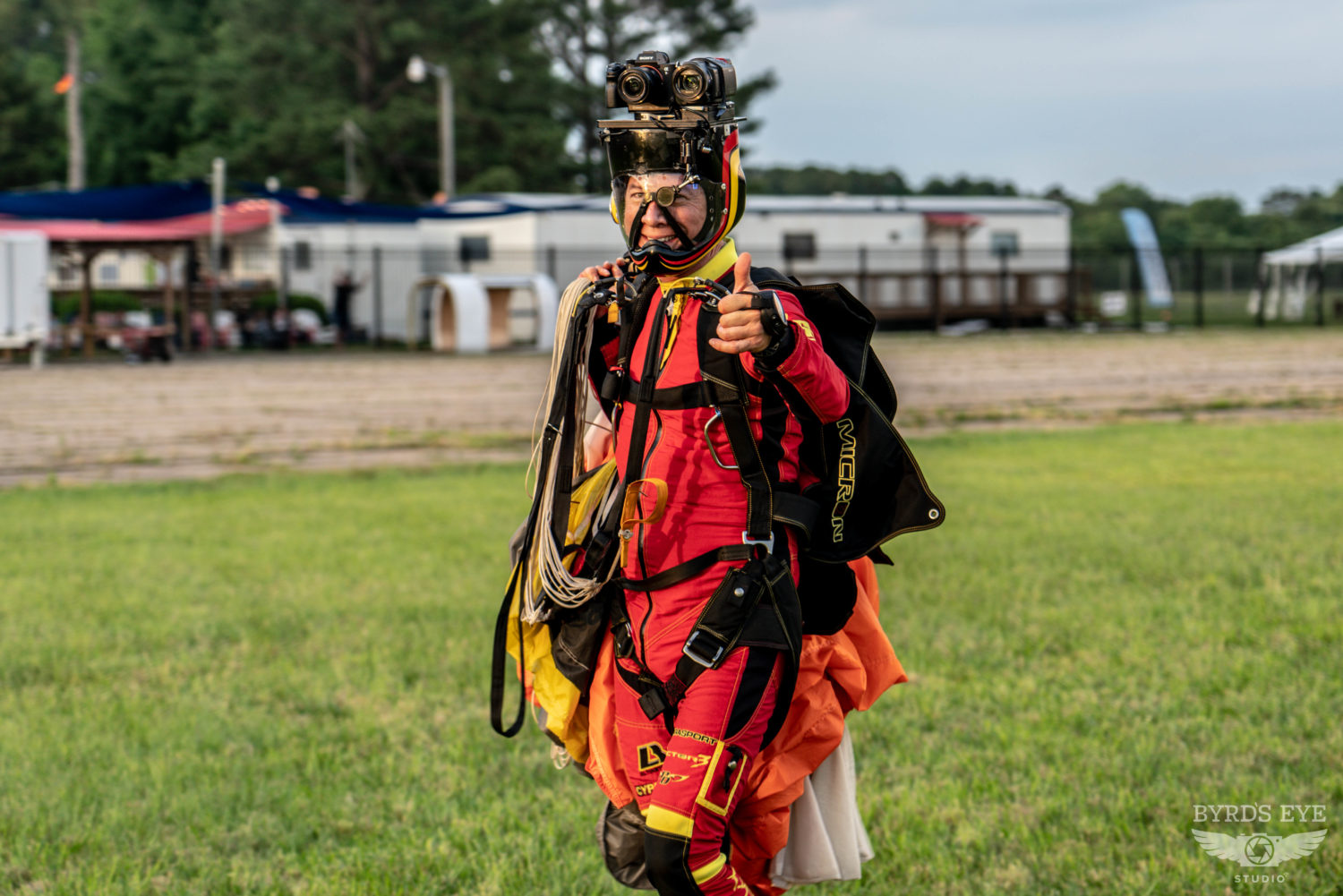
Type of Video Services
Few people give this much thought, but the type of video you purchase plays a role in not just the enjoyment of the skydive, but also the memory of it. The majority of skydiving centers today use handcam for video and photography and the reason for this is because:
a). Only one person (the tandem instructor) is needed to capture the footage
b). It’s more profitable for the instructor and the dropzone
c). The camera equipment used is generally less expensive to setup
While handcam is more efficient, it’s our belief that this kind of photo and video package is inferior compared to having an outside camera flyer. The reasons we believe this are:
- Handycam is shot from the same perspective (the wrist) whereas a camera flyer can capture the experience from below, above, behind, and in front of the tandem student.
- Handycam always includes the arm of the instructor. We’re not fans of hairy arms being in skydiving photography!
- The exit shot is the most important shot and having an outside camera flyer capture the plane in the background is more impressive than the same shot captured from handycam.
- Having a camera flyer is also like having a cheerleader with you in the sky! Seeing someone fly with you in free fall enhances the experience that much more!
It should be noted that the advantage of handycam is it does capture the experience under parachute, but the truth is, this footage is seldom watched as it usually involves many minutes of floating under parachute… it can get tedious when watching more than once and did we mention the instructor’s arm is always in the shot?
If photography is important to you, be sure to ask the skydiving center you’re booking at whether they use handcam or cameraflyers – it does make a difference! Skydive Carolina has used outside camera flyers since 1986 and we don’t intend to change!
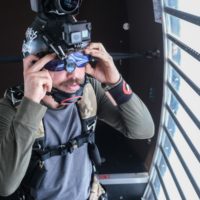
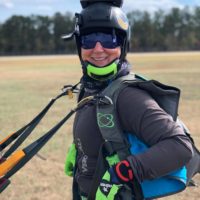
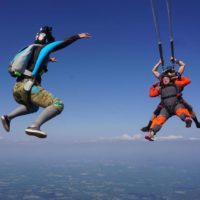
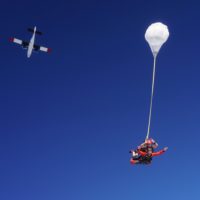
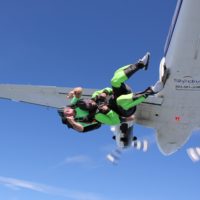
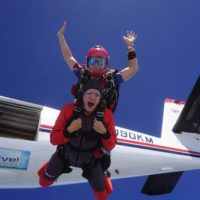
How To Go Skydiving – Step 3 – Read The Reviews
Have you ever been to a restaurant with amazing food, but terrible service? If you have then you know the service component plays a big role with the overall experience. It’s no different in skydiving. A great skydiving experience is based on the people at the dropzone. This may seem hard to believe, but there are many skydiving instructors who are burnt out and just kind of over it. If you get stuck with an instructor like that, it will sour the experience. The best way to root this out is to read the reviews of the dropzone on Google or TripAdvisor. You’ll get a good sense of what people are saying and you’ll get a sense of the dropzone’s professionalism based on how they respond to complaints.
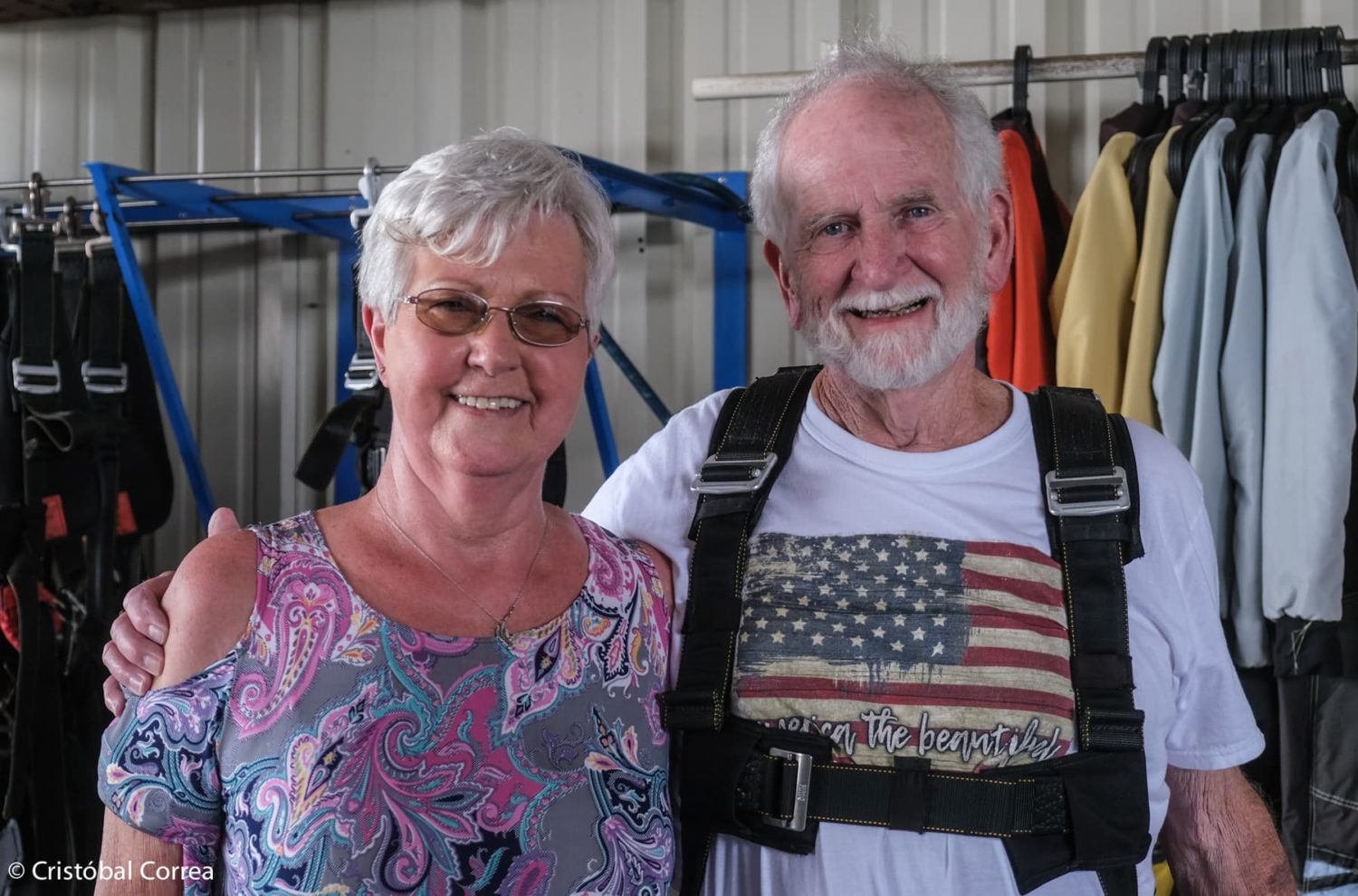
How To Go Skydiving – Step 4 – Cheapest Is Not Best
When researching a skydive, you may discover a wide variance in price. The easiest way for a skydiving center to attract a high volume of guests is to be the cheapest option in the marketplace, but we’d like to suggest that price not be your consideration when selecting a skydive. Having operated a skydiving center since 1986, there’s nothing cheap about running an aviation-based business especially when it comes to maintenance! Just as you wouldn’t try to find the cheapest heart surgeon, you shouldn’t try to find the cheapest dropzone.
Skydiving isn’t free of risk and it’s important to select a skydiving center not cutting corners.
How To Go Skydiving – Step 5 – Make It Happen!
Once you’ve considered all the variables above, it’s time to make it happen and this can be done either by contacting us, calling us (803-581-5867) or booking online!! Are you ready to skydive? We’d love the opportunity to host you for your jump!

